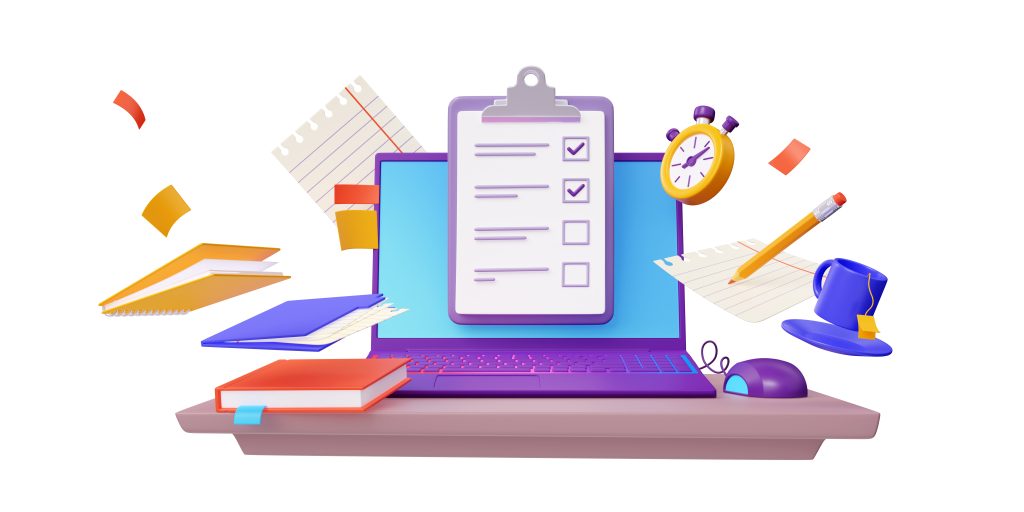
10 tips as well as links to free online practice tests that will allow you to check your level and better prepare for the JLPT.
- Organize your study routine
- Save some time to review what you’ve learned
- Look up what you need to learn for the JLPT level you are aiming for
- Put off till later the points you do not understand immediately
- Find mock JLPT online
- Be honest with yourself
- Do not focus on only one section
- Learn with a real method
- There is no official curriculum for the JLPT
- Get support from a private teacher
What is the JLPT?
The Japanese Language Proficiency Test, also called JLPT, is the Japanese equivalent of TOEIC or TOEFL for English. This exam serves to evaluate the Japanese skills of non-native speakers. It has been held every year since 1984, twice a year: once in July and once in December, and organised by the Japanese Ministry of Education and the Japan Educational Exchange and Services (JEES). The test is held in several countries, however, it is sometimes held only once a year, in July or December, depending on the country. There were more than 600,000 examinees in 2010 and the JLPT has been getting more and more recognition among businesses, schools, universities and administrative places around Japan. It has become a common tool to indicate a specific Japanese level and is found in many places: job offers or prerequisites to undertake a course.
[getpage file=”wordpress-shortcode/whitepaper-modal.html”]
Tips to successfully pass the JLPT
If you’re learning Japanese and would like to take one of 5 different levels that the JLPT offers, you’re in the right place! We will give you tips that, if applied correctly, will help you succeed and greatly help you prepare for the test.
Organize your study routine
Pick a time window during the week to study Japanese and keep it consistent. Success comes with discipline. Calculate how much time you have left until the exam, check which grammar points you have left to see and divide the number of kanjis to learn with the number of weeks of study preparation you have to study a set number of kanjis every week. Organising yourself and time management will allow you to study efficiently. If you try to cram everything in your head at the last minute, you might forget everything in the next few days and end up having wasted time.
Save some time to review what you’ve learned
If you’ve decided to follow the above piece of advice, you will soon have set up a study schedule. Make sure to keep some time window open to plan some review sessions. They will be essential to solidify your knowledge and allow you to progress in your study program without forgetting everything you have learned before. Ideally, try to finish your study program early in order to dedicate the last few days (or even weeks!) to reviewing all the content you’ve learned so far.
Look up what you need to learn for the JLPT level you are aiming for
With only a few suitable keywords, you should be able to find lists of words, kanjis and grammar points necessary for the relevant JLPT level you are planning to take.
However, make sure to check the reliability of your sources and keep in mind that no list is definitive or exhaustive as no official lists of what to know for the JLPT exist! All the existing lists of vocabulary, kanjis and grammar points are based on recurring elements from previous tests. So keep in mind you could still stumble on something that was not in any of these lists.
Put off till later the points you do not understand immediately
Time flies and that is even more true when you are preparing for a test. Consequently, do not bother spending weeks on specific points you do not understand. If there is a grammar notion that you do not understand or a group of kanjis that you forget systematically, move on. Keep learning new things and move forward. This does not mean you should not study them at all, it only means you should postpone them and study them later, in order to still learn as many things as you can that will help you for the JLPT. Once you have gone over all the elements of your study program, and if you have time left, you can dedicate time to the elements that have been challenging you.
Find mock JLPT online
There are numerous websites that provide resources in order to practice for the JLPT. JLPT’s official website, for example, has quiz, audio and reading samples that covers each JLPT level and content you will be faced with during the test. JLPT Drills is another website that will allow you to practice through a great number of exercises kanjis, vocabulary and grammar needed for the level you are aiming for. The website is updated regularly and should soon offer audio samples as well as an option to review grammar points on which you got confused in the quizzes.

Be honest with yourself
No need to hurry! Aiming for a JLPT level that is too high for your current level will only result in a loss of time. Take a level corresponding to your skills and make sure to have the necessary knowledge before jumping in. Passing the N5 is always more gratifying than failing the N4 twice!
As mentioned earlier, there are numerous websites and online content that will allow you to figure out what your level is. After taking mock tests and looking at some online study content, make a list of points you do not know yet. This will allow you to figure out how much you need to do and learn and what your target level should be.
Do not focus on only one section
In order to pass the JLPT, you need to obtain a minimum global score that depends on each level. For example, the pass mark for the N5 is 80/180 while it is 100/180 for the N1. It is also important to keep in mind that each section in the JLPT (vocabulary, grammar, reading and listening) also requires you to obtain a minimum score if you want to pass the test. Therefore, it is essential not to leave anything aside and work on all sections of the exam.
Learn with a real method
In order to learn Japanese, many tend to forage for knowledge on the internet. This consists in looking up for content and explanation depending on the immediate needs but doing only this will most likely make you miss on key elements in your Japanese language journey.
Moreover, most websites teaching Japanese are managed by non-native speakers. Because of this, no matter how motivated they are, they are not immune to making small mistakes in their lessons and examples.
On the other hand, a proper Japanese learning method, no matter what it is, has a definite program with a clear beginning and end. It is made coherently and thought so that learners can make clear progress without skipping any essential point. It is one of the best ways to learn Japanese and get ready for the JLPT.
There is no official curriculum for the JLPT
This is one of the most important points in your preparation. You can get ready for the test with vocabulary, grammar and kanji lists and follow methods without skipping any single point, the thing is that there is no official list or method to prepare for the JLPT. Lists that exist online are based on the content and grammar points frequently encountered during the test, depending on the level you’re taking. However, this does not make these lists 100% reliable and at any time you could stumble on something that was not part of these lists.
In order to counter this problem, the best thing to do is to study further than your target level. This should help reduce the chances of being faced with something you have never seen before.
Get support from a private teacher
This last advice is probably going to sound quite obvious. If you are having troubles understanding something and if, no matter how much you study them, you always forget the same points, the best thing to do is probably to take a few private Japanese lessons with a teacher. They will adapt to your level and allow you to reach your target.
There are most likely Japanese teachers near where you live! If that’s not the case or if you’d rather have online courses, contact us!
SNG offers online courses whether they are held from our Japanese language school located in Europe (Paris, GMT+1 in winter and GMT+2 in summer) or from our school in Tokyo (GMT+9) if you are more comfortable with Japanese office hours. All our teachers are native and certified.
